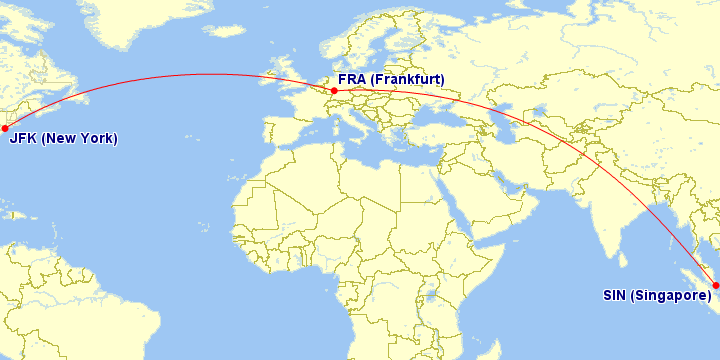Back in 1944 when the commercial aviation industry was first taking shape, a meeting known as the Chicago Convention took place to set out the rules of the game for international air travel.
At this meeting, a list of commercial aviation rights was drawn up, to be henceforth known as the “Freedoms of the Air”.
Some of these freedoms are rather basic, like the “first freedom”, which allows airlines from a certain country to fly over a different country without landing. Others, such as the “fifth freedom” of commercial aviation, are a little more interesting.
Fifth freedom flights occur when airlines from a certain country fly between two other foreign countries, as long as the flight ultimately originates or terminates in the airline’s home country.
Let’s have a deeper look at fifth freedom flights and why they make for quite an intriguing phenomenon in the world of aviation.
How Do Fifth Freedom Flights Work?
Airlines typically exercise the fifth freedom by operating a multi-stop flight that begins in Point A within their home country, flies to Point B in a different country, and then flies to Point C in a third country. The flight between Point B and Point C would be considered the fifth freedom flight.
Let’s take one of the most well-known North American fifth freedom flights as an example: Singapore Airlines’s flight from Frankfurt to New York JFK.
The Singapore-based airline flies from its home airport of Singapore to Frankfurt, and then proceeds onwards to New York.
Despite there being two separate takeoffs and landings, the flight uses a single flight number (SQ26), and customers are able to use this service to travel from Singapore to Frankfurt, Singapore to New York, or exclusively between Frankfurt and New York.
Note that the ability to carry traffic exclusively between Point B and Point C is a key feature of fifth freedom flights.
If the flight simply stops in Point B as a technical or refuelling stop, without the right to pick up and drop off passengers, then it doesn’t invoke the fifth freedom (instead, it’s the second freedom of the air that applies here).
An example of such a flight is the now-defunct British Airways service from London City Airport to New York JFK. This flight made a refuelling stop in Shannon, Ireland, but customers weren’t able to book this flight from Shannon to either London or New York – it was purely a technical…
Click Here to Read the Full Original Article at Prince of Travel…
